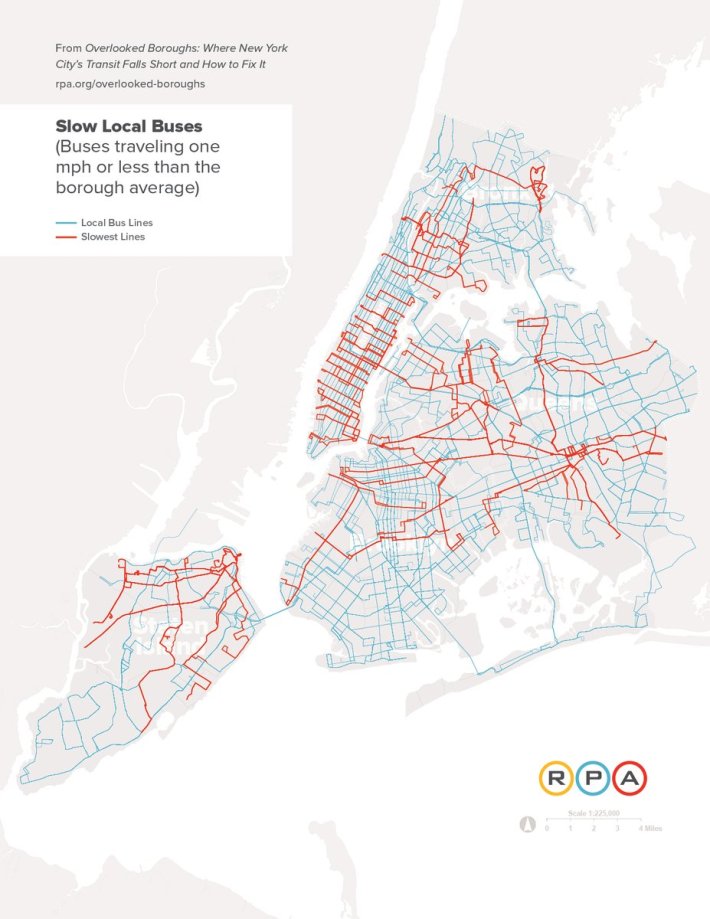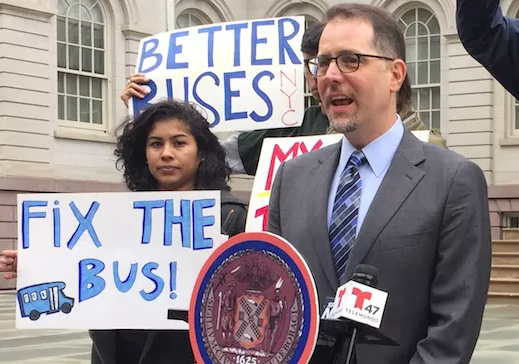Giving buses priority at traffic signals is one of the easiest and cheapest ways to speed up NYC's sluggish surface transit network. But only five of the city's 236 bus routes currently have "transit signal priority" (TSP), and DOT is aiming to add it on just 20 more routes by 2020.
Council Member Mark Levine thinks the agency can do better, and he's introducing legislation to compel DOT to ramp up the pace of installation [PDF].
City buses spend approximately 20 percent of their time stopped at red lights, according to DOT. TSP can shave that down by holding green lights for approaching buses and shortening red lights where buses are stopped [PDF].
Instead of the five routes per year where DOT is currently planning to implement TSP, Levine's bill would mandate at least ten routes annually.
"There are many bus lines around the city that are moving at not much more than walking speed, and New Yorkers are responding by getting off the bus," Levine said at a press conference at City Hall this morning. "[TSP] has been proven to add substantially to the speed of buses on the routes where this has been piloted."

The MTA is currently in the process of fitting its entire bus fleet with the technology needed to interact with the city's traffic signals. The remaining costs are not very large. Implementing TSP involves spending between $1 million and $2 million per bus route, according to TransitCenter.
"The technology to do this is in place. Buses now have GPS and traffic signals are equipped with Wi-Fi connectivity," Levine said. "What's really required to implement this is just planning, it's mostly staff time."
So far, signal priority has been limited to Select Bus Service routes, a small number of high-priority corridors where DOT and the MTA also implement off-board fare collection, bus lanes, and other measures to improve service. It makes sense to prioritize high-ridership routes, but there's no reason the technology has to be limited to the specially-branded SBS corridors. Since last year, the Bus Turnaround Coalition has been calling on the city to expand TSP citywide.
The city's buses are the slowest in the nation and keep getting slower. Ridership is falling precipitously. Millions of New Yorkers who rely on buses can't get to work, school, and other destinations in a reasonable amount of time.
"What we need at this time is leadership, especially from Mayor de Blasio in order to prioritize transit on our streets," said TransitCenter Deputy Executive Director Tabitha Decker. "We need to expand the tools of SBS systemwide. Transit signal priority is a way to do that quickly and effectively."






